I need to make sure each idea references the core subject (window trim/farmhouse trim) and provides unique practical value.Farmhouse interior window trim transforms ordinary openings into captivating focal points that define your home's character. The right trim selection bridges architectural elements while adding depth, warmth, and visual interest to any space. Whether you're renovating a century-old farmhouse or infusing modern spaces with rustic charm, window trim serves as both functional necessity and design statement. Quality trim installation not only conceals gaps and improves energy efficiency but also creates the foundation for that coveted farmhouse aesthetic. From simple painted boards to elaborate molding combinations, these design choices reflect personal style while honoring timeless country traditions that continue to inspire today's most beautiful homes.
1. Classic White Painted Thick Trim

Crisp white painted window trim using 1x6 boards creates an instantly recognizable farmhouse look that brightens any room. This approach involves replacing narrow builder-grade molding with substantially thicker lumber, typically costing under $10 per window and requiring only basic tools. The generous proportions of thick trim make small windows appear larger while providing visual weight that commands attention. Paint in classic white shades like Pure White or Simply White to achieve that clean, cottage-inspired aesthetic. This style works particularly well when paired with shiplap walls or neutral color schemes, creating a cohesive farmhouse environment. Installation requires only straight cuts, making it accessible for DIY enthusiasts seeking maximum impact with minimal complexity.
2. Natural Wood Stain Window Trim

Reclaimed wood in natural tones adds rustic warmth to windows while honoring authentic farmhouse traditions. Choose oak, pine, or cedar lumber with visible grain patterns for maximum character and depth. Natural wood window trim pairs beautifully with white or cream walls, creating striking contrast while maintaining organic appeal. Popular stain options include walnut, oak, and cherry in varying intensities to complement existing wooden elements throughout your home. The earthy tones provide grounding elements that balance brighter spaces without overwhelming delicate color palettes. This approach works exceptionally well in bedrooms and living areas where cozy atmospheres take precedence. Seal with polyurethane for durability while preserving natural beauty and texture that improves with age.
3. Black Window Trim for Modern Farmhouse Appeal
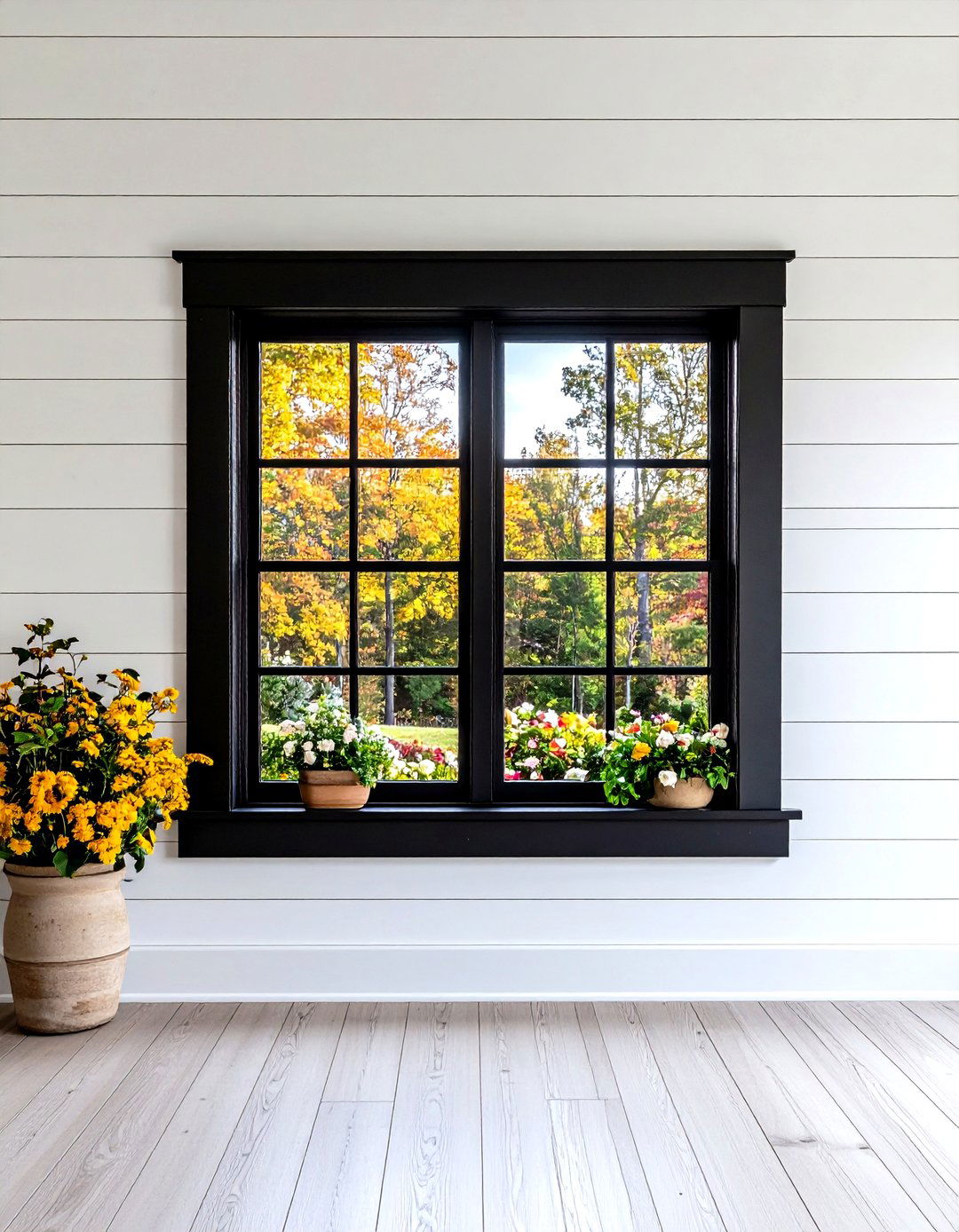
Bold black window trim delivers contemporary sophistication while maintaining farmhouse roots through clean lines and dramatic contrast. Black trim adds sophistication and personality to spaces, making bold statements against white walls or neutral backgrounds. This approach works particularly well with white shiplap, creating striking visual boundaries that define architectural features. Paint trim in matte black for subtle elegance or choose semi-gloss finishes for more dramatic impact. Consider extending black accents throughout the room via light fixtures, hardware, or furniture pieces to create cohesive design flow. Black window frames adapt seamlessly to diverse architectural styles while enhancing modern farmhouse exteriors. Balance bold trim with warm textiles and natural materials to prevent overly stark appearances.
4. Shiplap-Integrated Window Trim Design
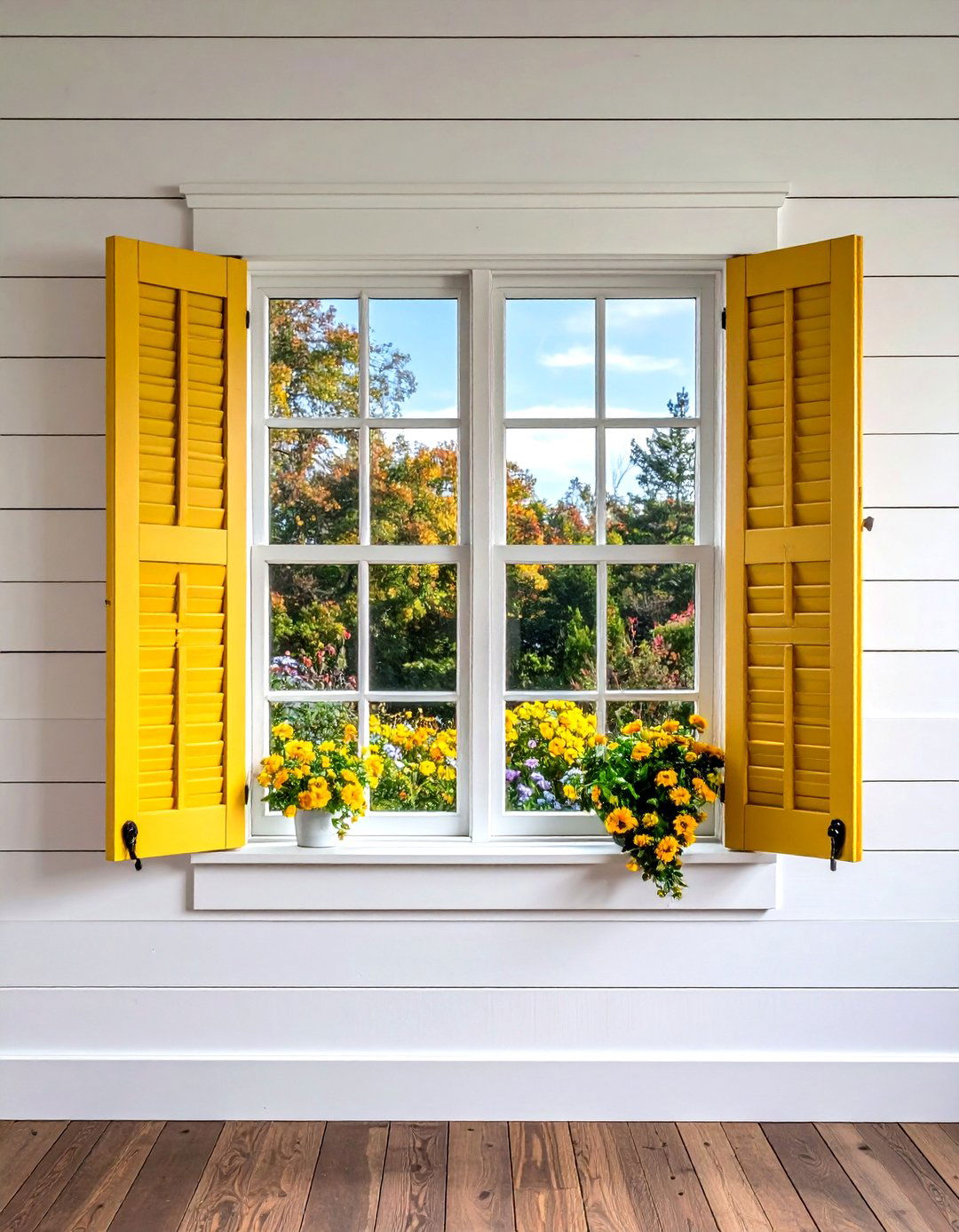
Incorporating shiplap with window trim creates seamless transitions that enhance architectural features while maintaining rustic charm. Install trim boards directly over shiplap panels for a finished appearance that honors traditional farmhouse construction methods. This technique works beautifully in kitchens, bathrooms, and bedrooms where cohesive wall treatments establish unified aesthetics. When combining shiplap with new trim, install trim over the shiplap for a more finished look rather than butting materials together. Choose trim colors that complement or contrast with shiplap tones depending on desired visual impact. White trim over natural or painted shiplap creates classic combinations that feel both timeless and fresh. The horizontal lines of shiplap paired with substantial window trim add architectural interest without requiring expensive renovations.
5. Board and Batten Window Trim Style
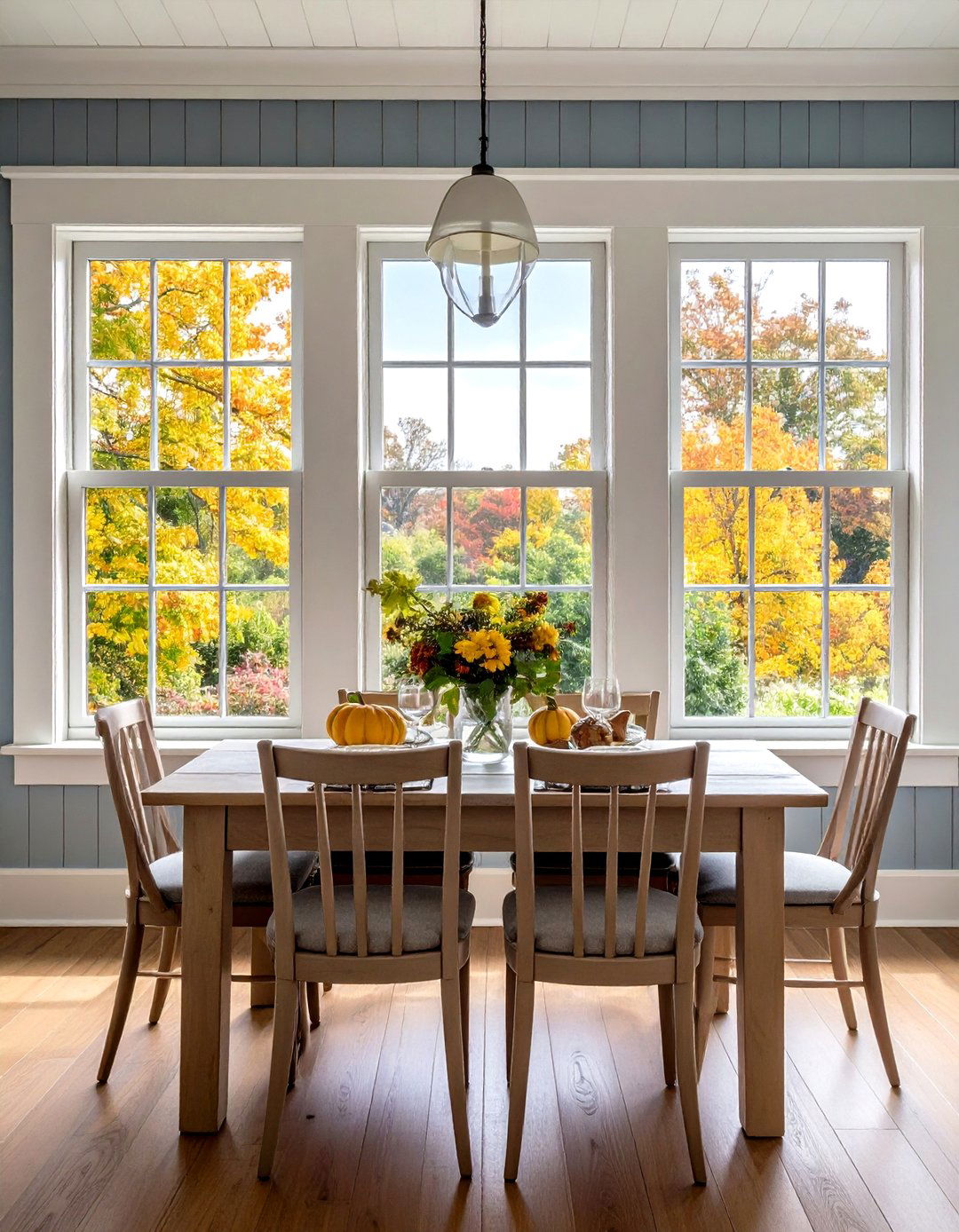
Board and batten window trim features wide boards with narrower battens placed vertically to create textured, rustic charm. This traditional farmhouse technique adds dimensional interest while maintaining clean, geometric lines that complement both vintage and contemporary interiors. White board and batten walls combined with natural materials create elegant yet rustic modern farmhouse kitchens with clean lines and texture. Apply this concept around windows by incorporating vertical battens into trim design, creating custom millwork appearance using standard lumber. Paint in classic farmhouse colors like cream, soft gray, or sage green for authentic country appeal. The vertical emphasis draws eyes upward, making ceilings appear higher while adding substantial visual weight to window surroundings that enhances overall room proportions.
6. Distressed Paint Finish Window Trim
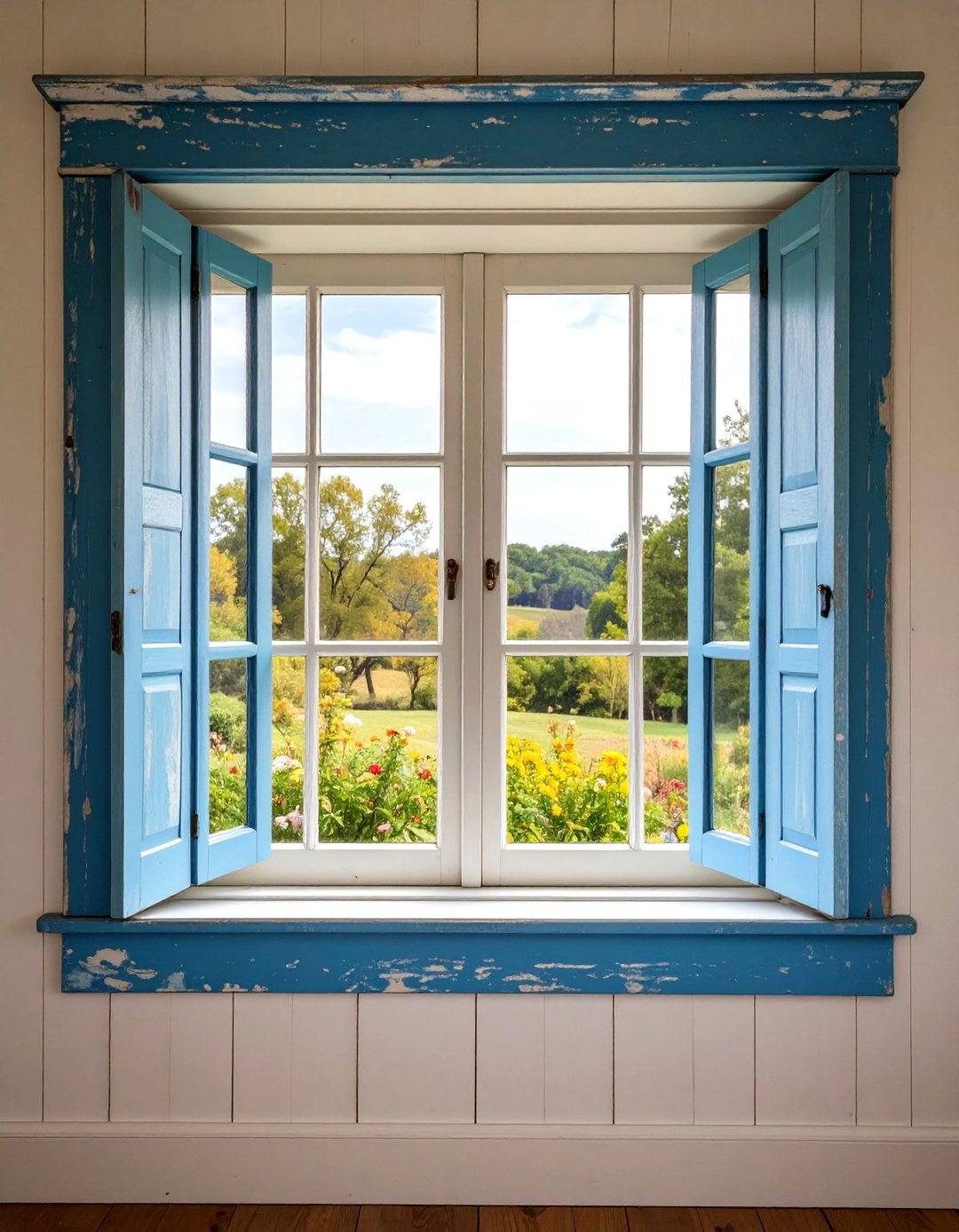
Distressed paint finishes create intentionally worn, weathered appearances that add character and warmth to farmhouse window trim. Achieve this effect by layering paint colors, then sanding strategic areas to reveal underlying tones that suggest years of loving use. Start with darker base coats, apply lighter top colors, then distress with sandpaper or scraping tools for authentic vintage charm. Dry brushing and layering different paint colors before distressing creates charmingly rustic appearances with depth and texture. Focus distressing on areas that would naturally receive wear like window sills, corners, and edges. This technique works particularly well with cottage-inspired color palettes featuring soft blues, greens, and creams. Seal with matte topcoat to preserve distressed appearance while protecting underlying work from daily wear.
7. Crown Molding Topped Window Trim
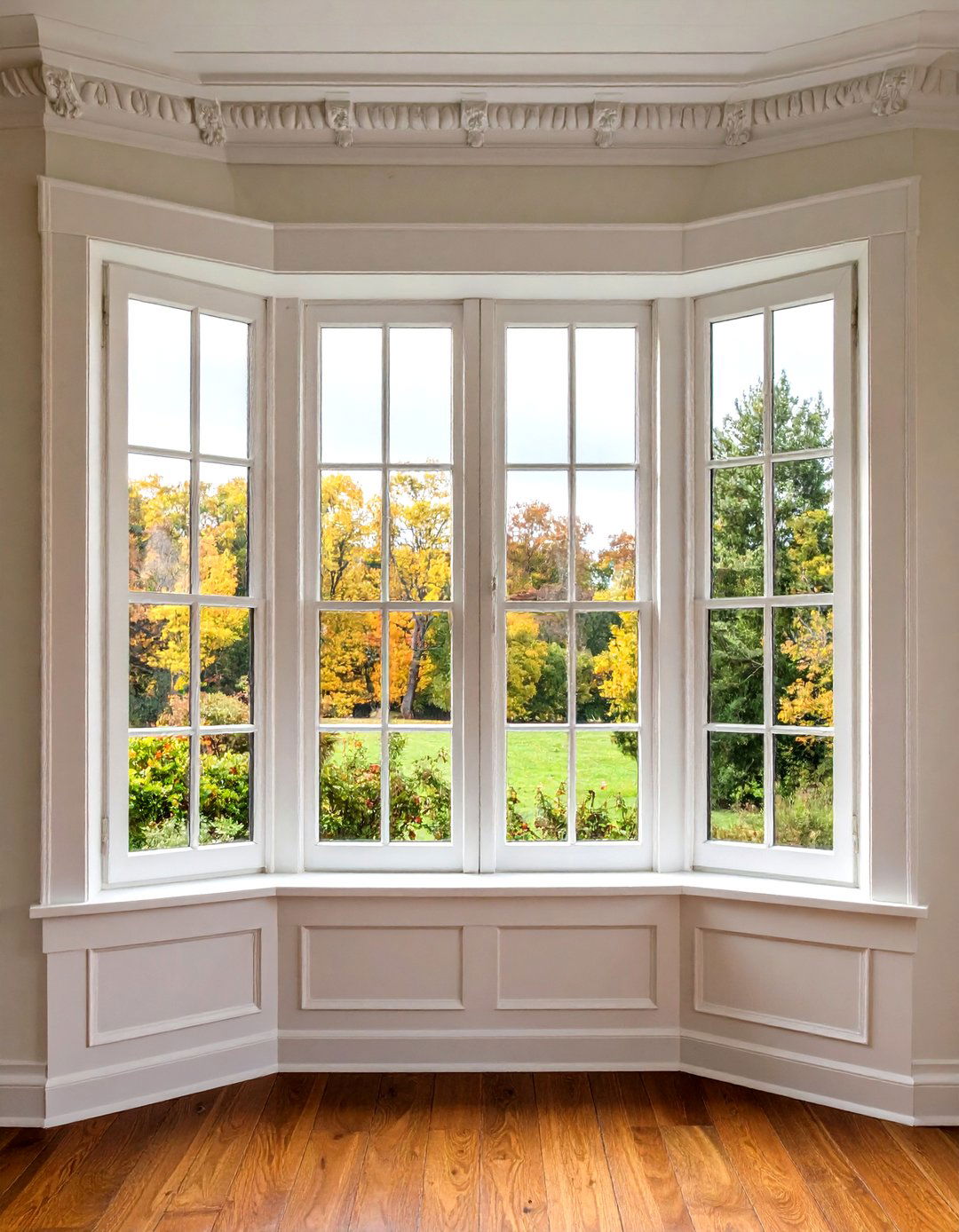
Adding crown molding to window trim creates classical entablature effects found in Georgian, Federal, and Greek Revival architectural styles. This sophisticated approach combines flat trim boards with decorative crown molding at the top, creating depth and visual hierarchy that elevates simple windows into architectural features. Original farmhouse windows often featured substantial molding measuring 5-1/4 inches wide with classic configurations of sill, bottom, and side moldings. Choose proportional crown molding that complements room scale without overwhelming window size. Paint entire assembly in matching colors for cohesive appearance, or use contrasting crown molding for added emphasis. Installation requires precise measurements and miter cuts but creates dramatic impact that justifies additional complexity. This technique works beautifully in formal dining rooms and living spaces requiring elegant detailing.
8. Beadboard Panel Window Trim
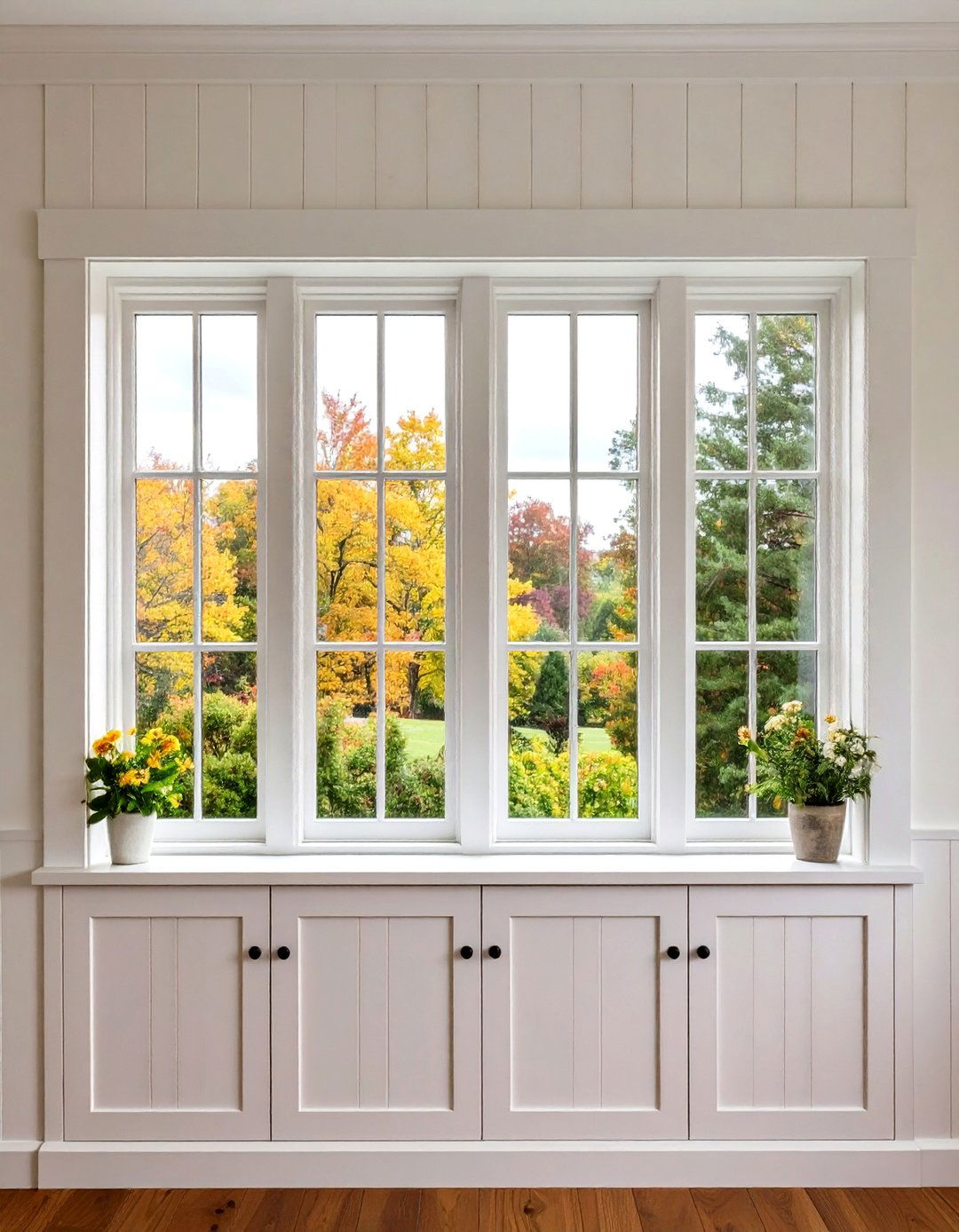
Beadboard trim features narrow vertical planks with small ridges between boards, adding texture while maintaining clean, simple appearances. This classic farmhouse technique incorporates traditional wainscoting patterns around window openings, creating custom millwork effects using readily available materials. White window trim paired with beadboard embodies traditional farmhouse design essence while creating clean, fresh looks that brighten rooms. Install beadboard panels as window trim surrounds, painting in classic white or soft pastels for authentic cottage appeal. Beadboard works well with any decor style from traditional to modern farmhouse and can be customized with decorative molding details. The vertical lines create visual height while the textured surface adds tactile interest that distinguishes windows as focal points within larger wall expanses.
9. Arched Window Trim Design
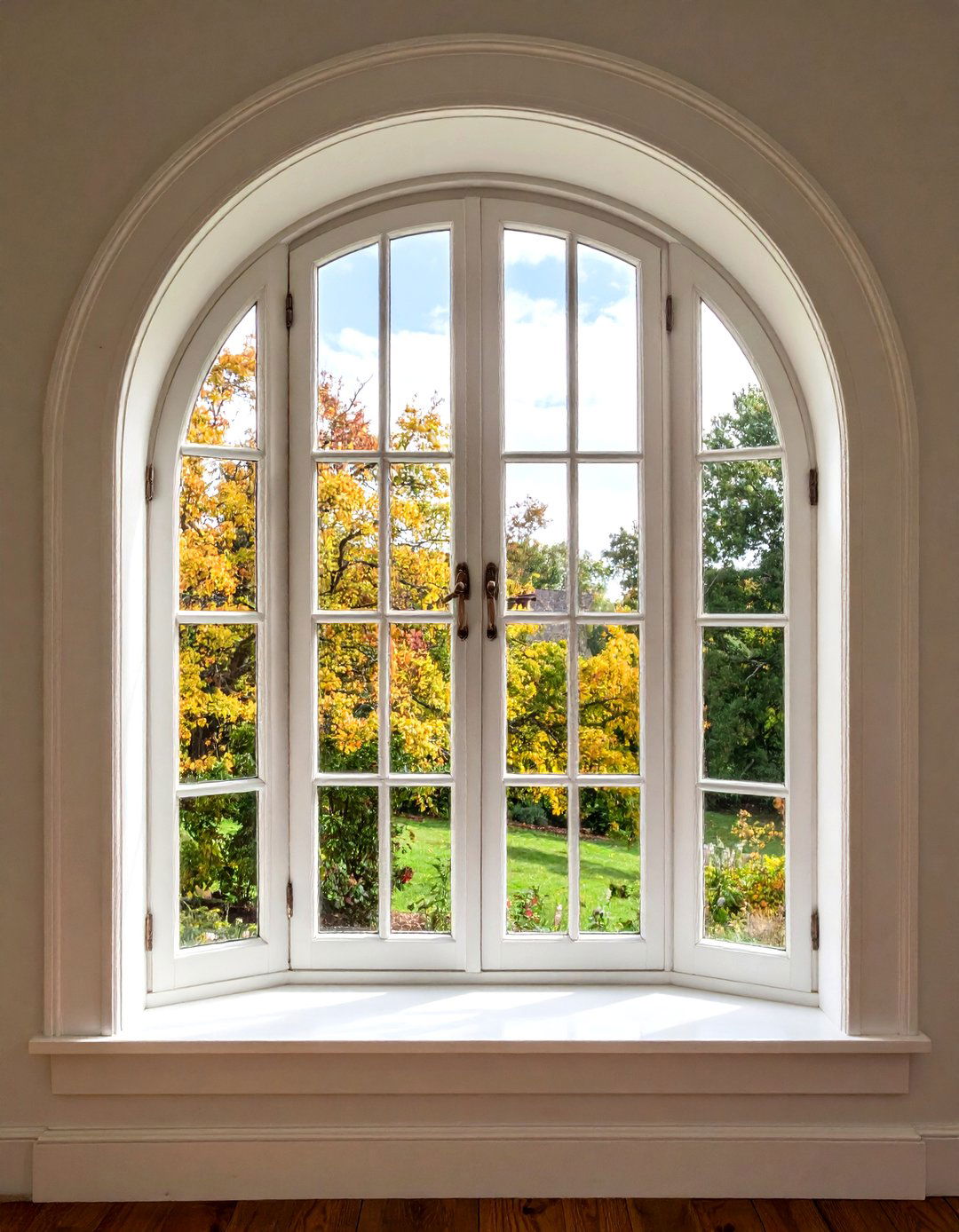
Arched window trim transforms standard rectangular windows into elegant, customized features that add architectural interest. Create gentle curves using flexible molding materials or construct arched headers from multiple wood pieces joined seamlessly. The curved shape of arches softens room lines while creating visual interest, enhanced by natural wood stains or distressed paint finishes. This technique works particularly well in rooms with Mediterranean or classical aesthetics where curved elements provide sophisticated contrast to angular furniture and fixtures. Arched doors and windows instantly elevate exteriors with custom appearances that distinguish homes from builder-grade alternatives. Consider incorporating decorative molding or beadboard details within arched surrounds for additional texture and dimension. Paint arches in colors that complement existing trim or create striking contrast for dramatic focal points.
10. Wide Plank Rustic Window Trim
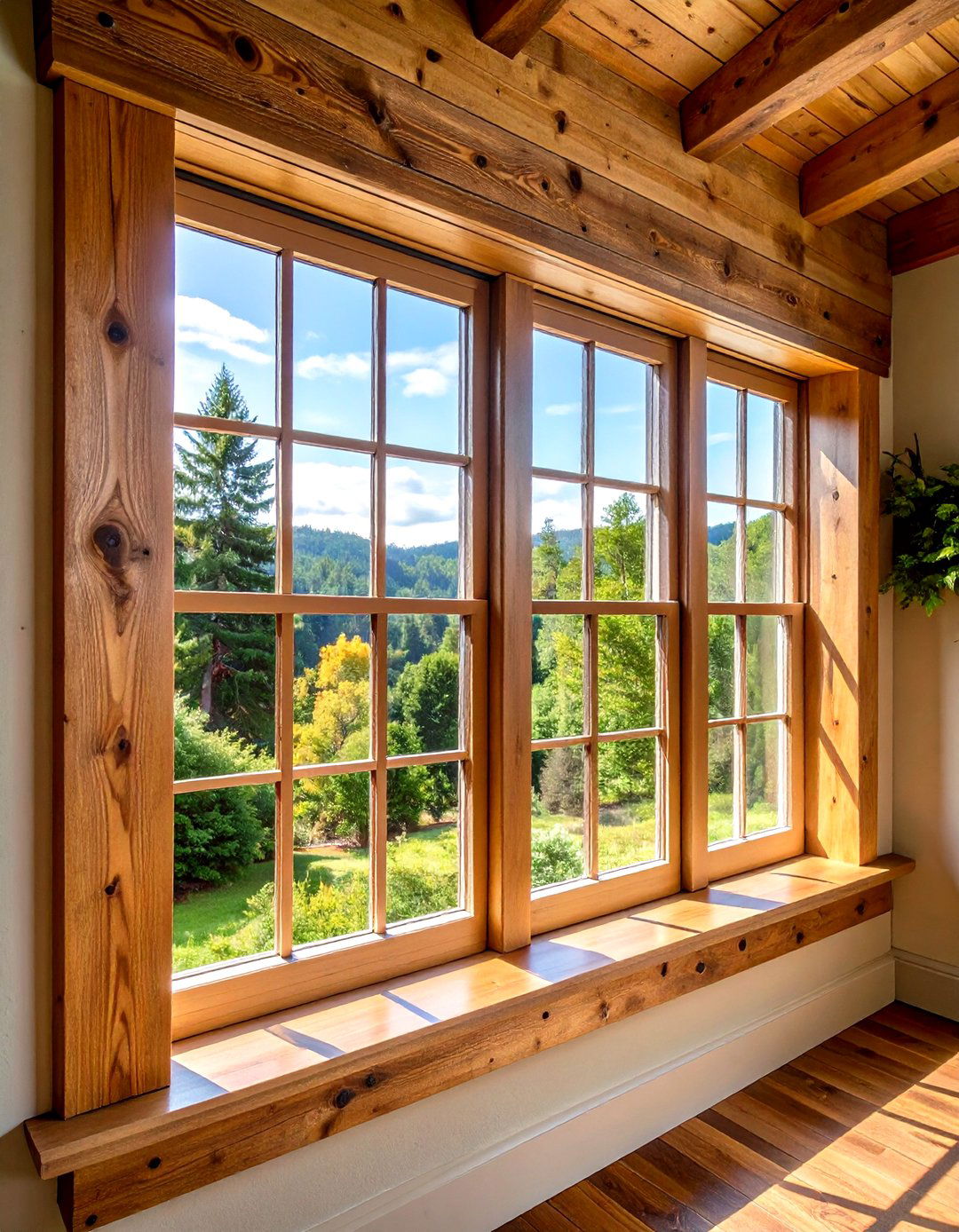
Wide wooden planks create striking statements when used as window trim, drawing attention while bringing substantial character to spaces. Choose lumber with visible knots, grain patterns, and natural imperfections that celebrate wood's organic beauty rather than concealing character marks. Wide trim makes bold architectural statements, offering robust frames that highlight large windows while adding grandeur to rooms. This approach works particularly well with reclaimed barn wood or salvaged lumber that carries historical patina and weathered surfaces. Wide trim can be painted or stained to suit interior design preferences while maintaining substantial visual presence. Install using construction adhesive and long screws to support heavier lumber weights. The generous proportions create custom millwork appearances without requiring expensive architectural modifications or professional installation services.
11. Fluted Window Trim Details

Fluted trim characterized by vertical grooves brings texture and sophisticated visual interest to farmhouse window surrounds. This classical architectural element works beautifully in traditional and neoclassical interiors where refined elegance enhances farmhouse foundations. Fluted trim provides refined, elegant looks that enhance architectural elements while maintaining understated sophistication. Purchase pre-made fluted molding or create custom versions using router tools on standard lumber for budget-friendly alternatives. The parallel grooves create shadow lines that add depth while reflecting light in subtle ways that change throughout the day. Paint in crisp white for traditional appeal or choose soft grays and creams for contemporary farmhouse aesthetics. Fluted millwork complements decorative window and door trim when applied consistently throughout spaces. Installation requires careful alignment to ensure groove patterns remain straight and visually appealing.
12. Corbel-Enhanced Window Trim

Corbel trim featuring ornamental brackets adds decorative elements that make windows stand out with traditional elegance. These decorative supports originated in classical architecture but translate beautifully to farmhouse interiors seeking custom millwork appearances. Corbels work excellently for accentuating shelves, mantels, countertops, and ceiling beams while adding architectural character. Install corbels beneath window sills or within upper trim assemblies for sophisticated detailing that suggests structural support. Choose from scroll-work, floral patterns, or geometric designs that complement existing architectural elements throughout your home. Selecting decorative pieces like corbels adds personality to rooms while providing focal points that range from bohemian to traditional farmhouse aesthetics. Paint corbels to match trim colors or create contrast using natural wood stains for added visual interest and depth.
13. Picture Frame Style Window Trim
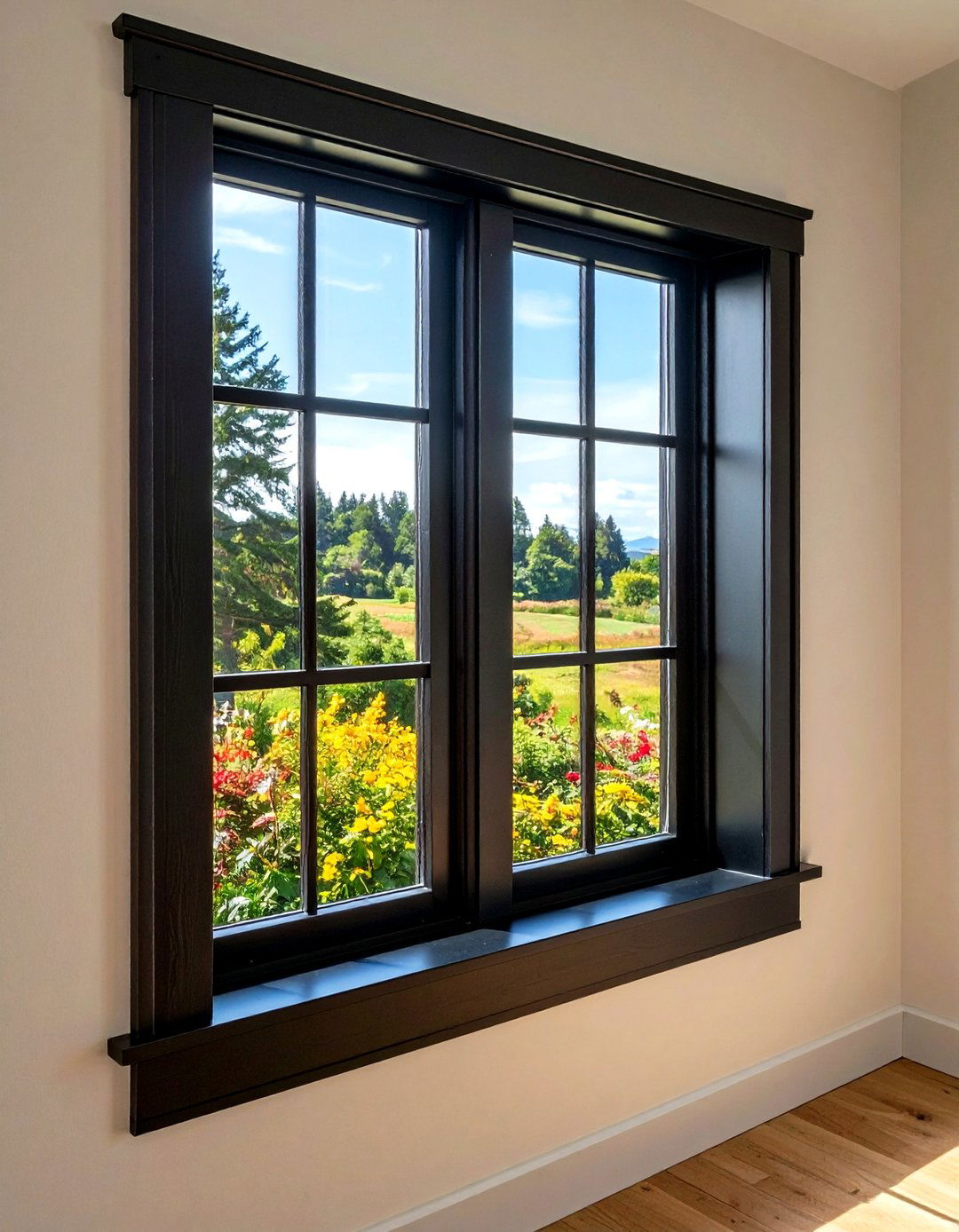
Picture frame trim surrounds windows completely, creating framed effects that are both elegant and contemporary. This approach treats windows as artwork within wall compositions, using consistent trim dimensions on all four sides for balanced, symmetrical appearances. Picture frame trim designs work well with box-type houses and modern architectural styles. Choose trim widths that complement window proportions without overwhelming glass areas or competing with natural light penetration. Picture frame trim works excellently in modern and minimalist interiors while enhancing windows with clean, straightforward approaches. Paint in colors that contrast with wall tones for definition or match walls for subtle, sophisticated integration. This technique creates custom millwork appearances using standard lumber and basic carpentry skills. The uniform border emphasizes window shapes while providing finished transitions between glass and surrounding wall surfaces.
14. Mixed Material Window Trim

Combining different materials creates unique farmhouse window trim that reflects personal style while honoring traditional craftsmanship principles. Mix natural stained wood with distressed finishes using steel wool and vinegar treatments for authentic weathered appearances. Pair reclaimed wood sills with painted trim boards, or combine metal accents with traditional lumber for industrial farmhouse aesthetics. Incorporate metal accents like black iron brackets or stainless steel hardware to add industrial edges while maintaining classic farmhouse character. This approach allows creative expression while maintaining functional window surrounds that protect wall surfaces and improve energy efficiency. Consider texture contrasts like smooth painted boards paired with rough-hewn timber, or sleek metal elements alongside weathered wood components. The key lies in maintaining proportional relationships and color harmony that unifies diverse materials into cohesive design statements.
15. Wainscoting-Integrated Window Trim
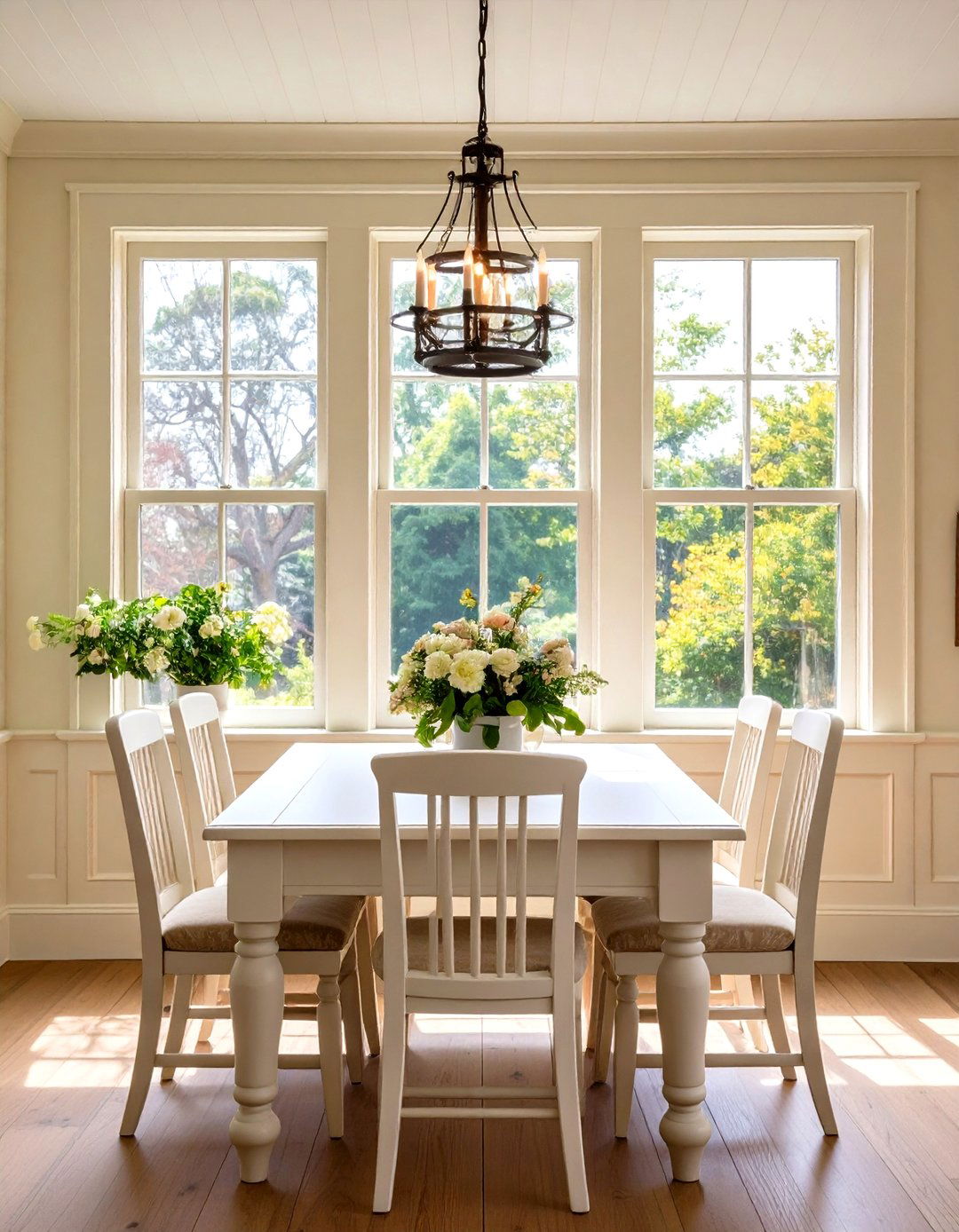
Wainscoting-style window trim features paneling designs covering lower wall portions with painted or wallpapered upper sections. This classical approach creates elegant looks that complement both traditional and modern farmhouse decor styles throughout various room applications. Coordinate window trim, casing, and wainscoting to highlight architectural features like bay windows above soaking tubs. Extend wainscoting panels around window openings, creating integrated wall treatments that unify architectural elements while adding sophisticated detailing. Wainscoting can be customized by choosing different panel heights or adding decorative moldings for enhanced visual interest. Paint wainscoting in classic whites or soft colors that complement window trim while creating cohesive room aesthetics. This technique works particularly well in dining rooms, bathrooms, and bedrooms where refined detailing enhances intimate atmosphere and traditional farmhouse charm.
16. Window Seat Integrated Trim
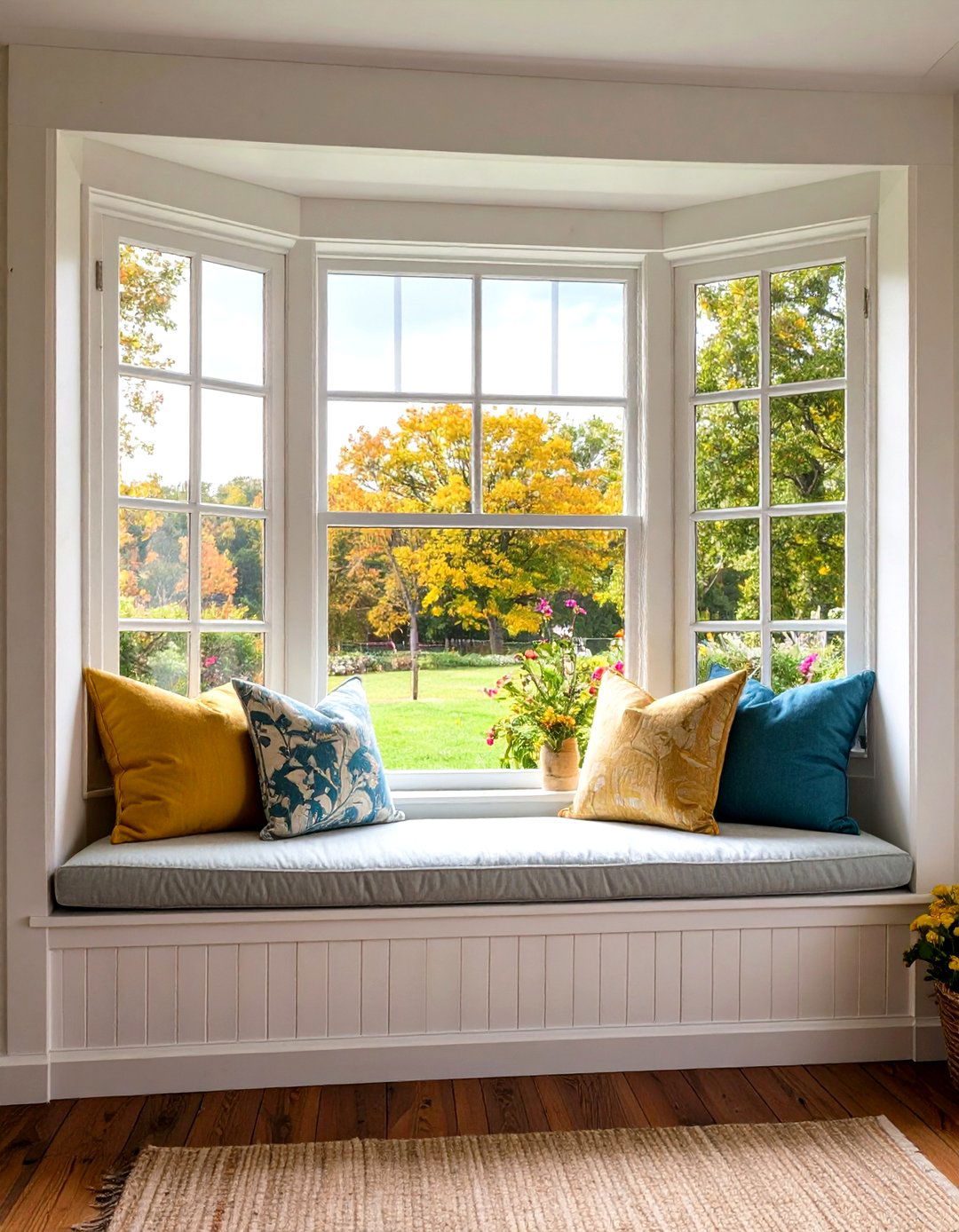
Built-in window seats with coordinated trim create polished looks that complement existing decor while providing functional seating and storage. Design window seats with substantial trim surrounds that frame both seating areas and windows as unified architectural features. This approach maximizes space efficiency while creating cozy reading nooks that celebrate natural light and outdoor views. Adding decorative molding or beadboard details elevates window seat designs while providing charming focal points in any room. Build seats using plywood platforms with hinged tops for hidden storage, then surround with trim that matches existing window treatments. Paint seats and trim in coordinating colors that enhance room aesthetics while defining functional zones within larger spaces. Consider adding cushions and throw pillows that complement farmhouse color palettes for comfort and visual warmth.
17. Minimalist Clean Line Window Trim
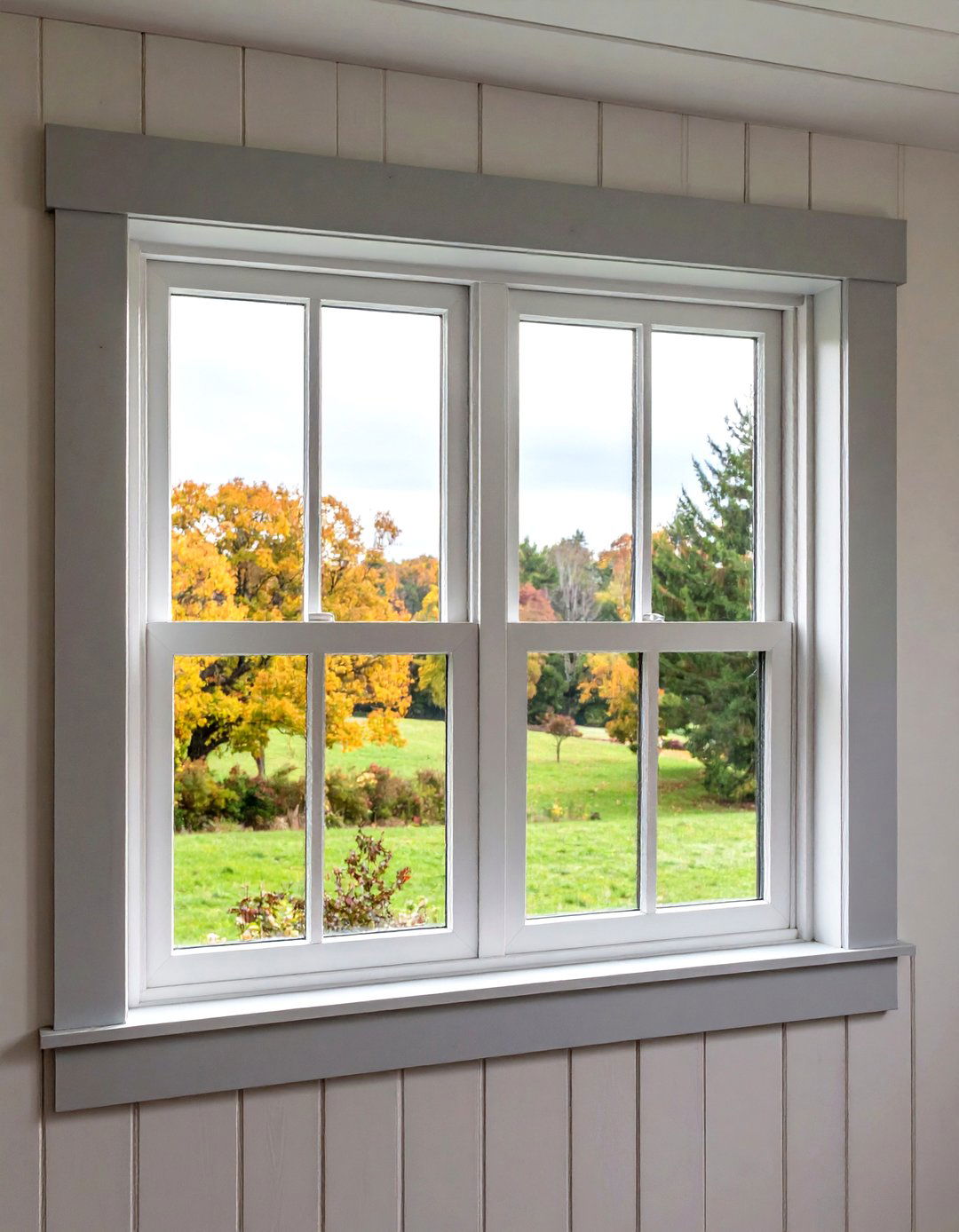
Modern, streamlined trim painted slightly different from wall colors creates depth without flash for tailored farmhouse minimalism. This contemporary approach emphasizes clean geometric lines while maintaining farmhouse authenticity through material choices and proportional relationships. Minimalist white trim paired with black window sashes creates high-contrast combinations that lend sophistication to rustic elements. Choose flat trim boards with square edges rather than decorative profiles for understated elegance that complements modern furniture and fixtures. Modern window trim tends toward minimalist design with clean lines and absence of decorative details. Paint in soft neutrals like warm whites, pale grays, or subtle beiges that create visual boundaries without competing for attention. This style works particularly well in open-concept spaces where consistent detailing maintains visual flow between different functional areas.
18. Header and Sill Emphasis Trim

Classic header and sill combinations create elegant yet understated options that never go out of style in farmhouse interior design. Focus decorative efforts on horizontal elements while keeping side trim relatively simple for balanced proportions that emphasize window width rather than height. Original farmhouse trim often featured substantial headers and sills with simple side boards that butted into top elements. Create deeper sills using 1x6 or 1x8 lumber that provides display space for plants, decorative objects, or seasonal arrangements. Adding small details like 1x2 strips between headers and side boards creates more finished appearances while maintaining clean, simple aesthetics. Paint headers and sills in colors that complement wall tones or create subtle contrast for definition. This approach works well in kitchens and dining areas where window sills serve functional purposes.
19. Multi-Layer Trim Build-Up
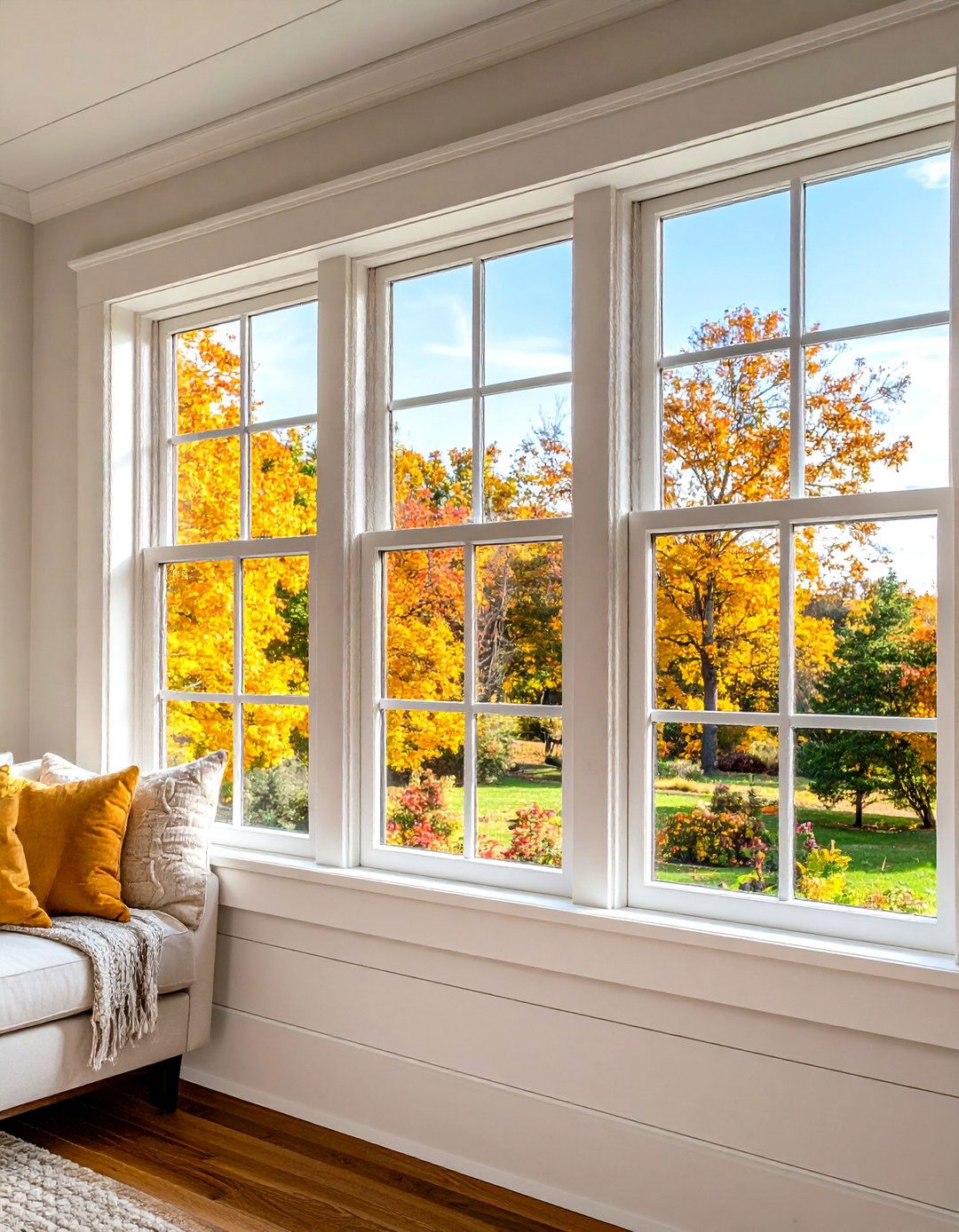
Building farmhouse window trim using multiple lumber layers creates authentic vintage appearances without requiring expensive boards or complicated cuts. Combine different trim profiles and board widths to achieve custom millwork effects using standard lumber from home improvement stores. This approach dramatically changes room vibes into farmhouse charm while using simple cuts of stock lumber. Start with flat trim boards as foundations, then add smaller molding strips, cap pieces, or decorative elements for visual complexity and depth. Layer different molding pieces to create unique, custom appearances that reflect personal style while honoring traditional craftsmanship principles. Paint entire assemblies in unified colors for cohesive appearances, or use subtle color variations to emphasize different layers and create sophisticated detailing. This technique allows creative expression while maintaining budget-friendly approaches to achieving high-end custom trim appearances.
20. Color-Matched Cohesive Window Trim
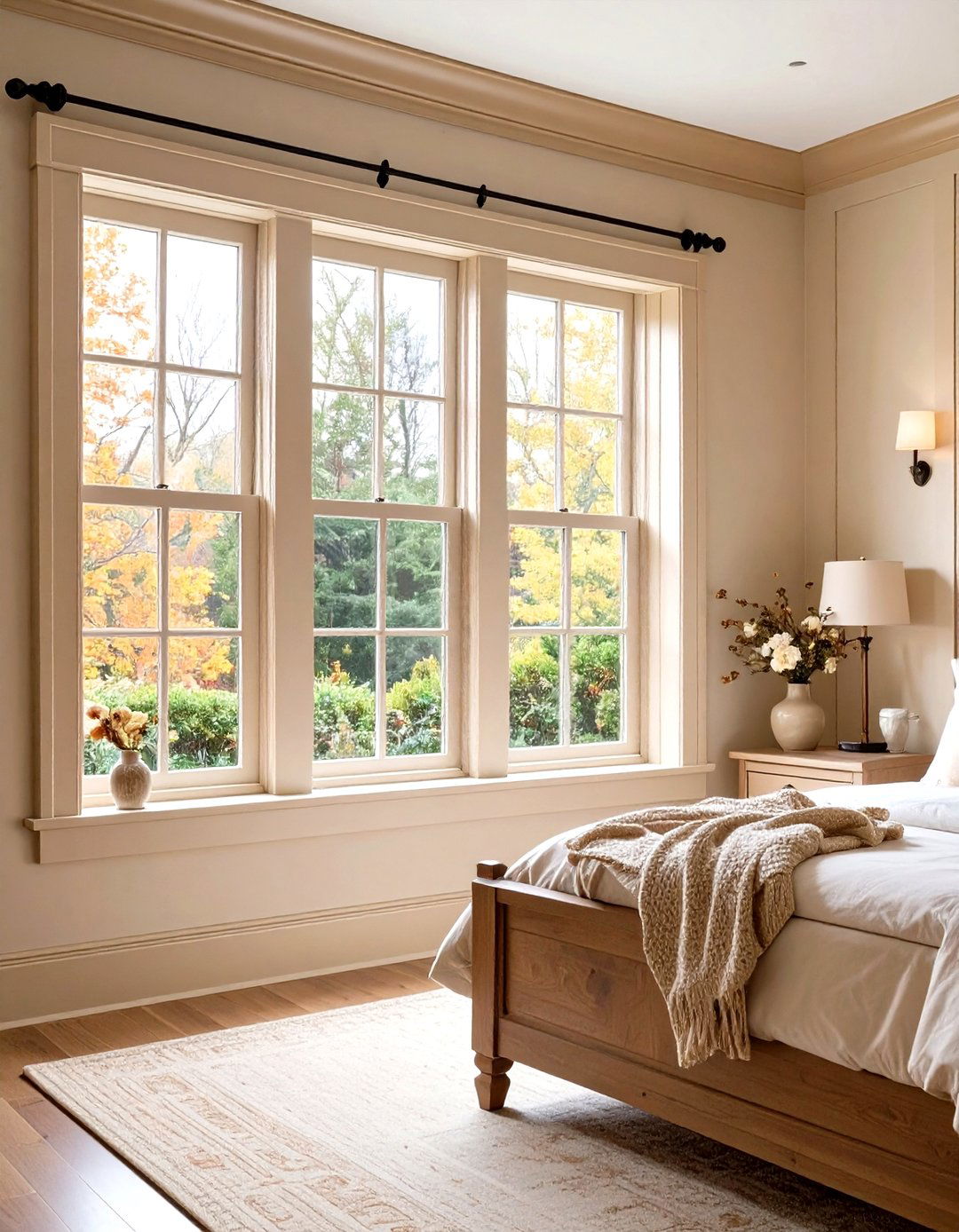
Using the same paint color on window trim, walls, crown moldings, and baseboards creates cohesive looks that emphasize architectural details. This sophisticated approach creates enveloping environments where trim defines spaces through texture and proportion rather than color contrast. Matching window trim to wall colors creates seamless, sophisticated looks that make spaces appear larger and more cohesive. Choose soft, neutral tones like warm beiges, pale grays, or creamy whites that provide subtle definition while maintaining visual continuity throughout rooms. This technique works particularly well in smaller farmhouse-style bedrooms or reading nooks where unified colors create intimate, cozy atmospheres. The monochromatic approach allows architectural features to speak through form and shadow rather than competing color relationships, creating sophisticated farmhouse environments that feel both timeless and contemporary.
Conclusion:
Thoughtfully designed farmhouse window trim elevates ordinary spaces into extraordinary environments that celebrate both function and beauty. These diverse approaches demonstrate how strategic trim choices create architectural interest while honoring authentic farmhouse traditions that continue to inspire contemporary design. Whether embracing bold contrasts with black trim, celebrating natural wood character, or pursuing minimalist sophistication, each technique offers unique benefits that enhance your home's personality and value. The key to successful farmhouse window trim lies in selecting approaches that complement existing architectural elements while reflecting personal style preferences. From budget-friendly DIY projects to elaborate custom millwork, these ideas provide starting points for transforming windows into captivating focal points that define your farmhouse aesthetic for years to come.


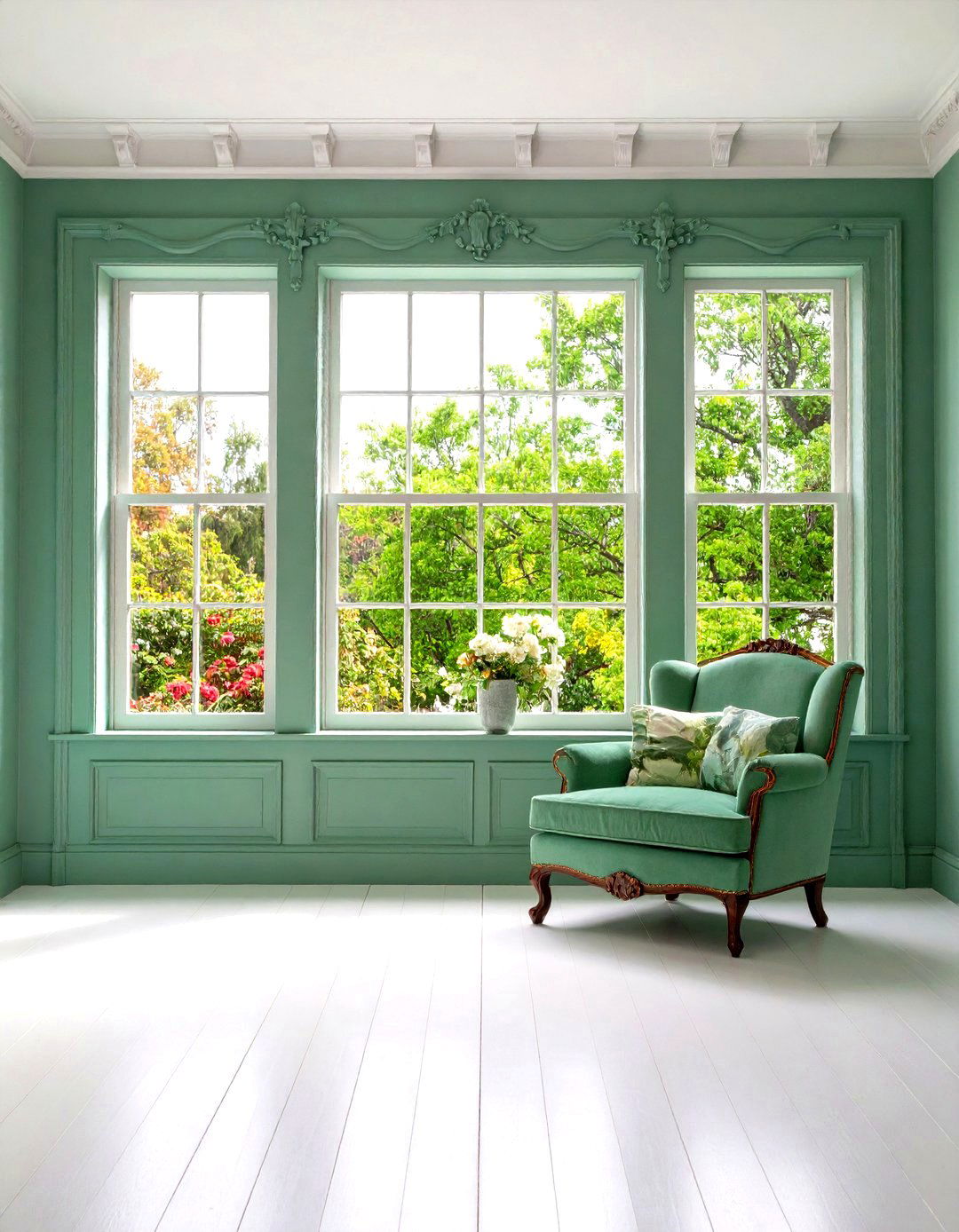


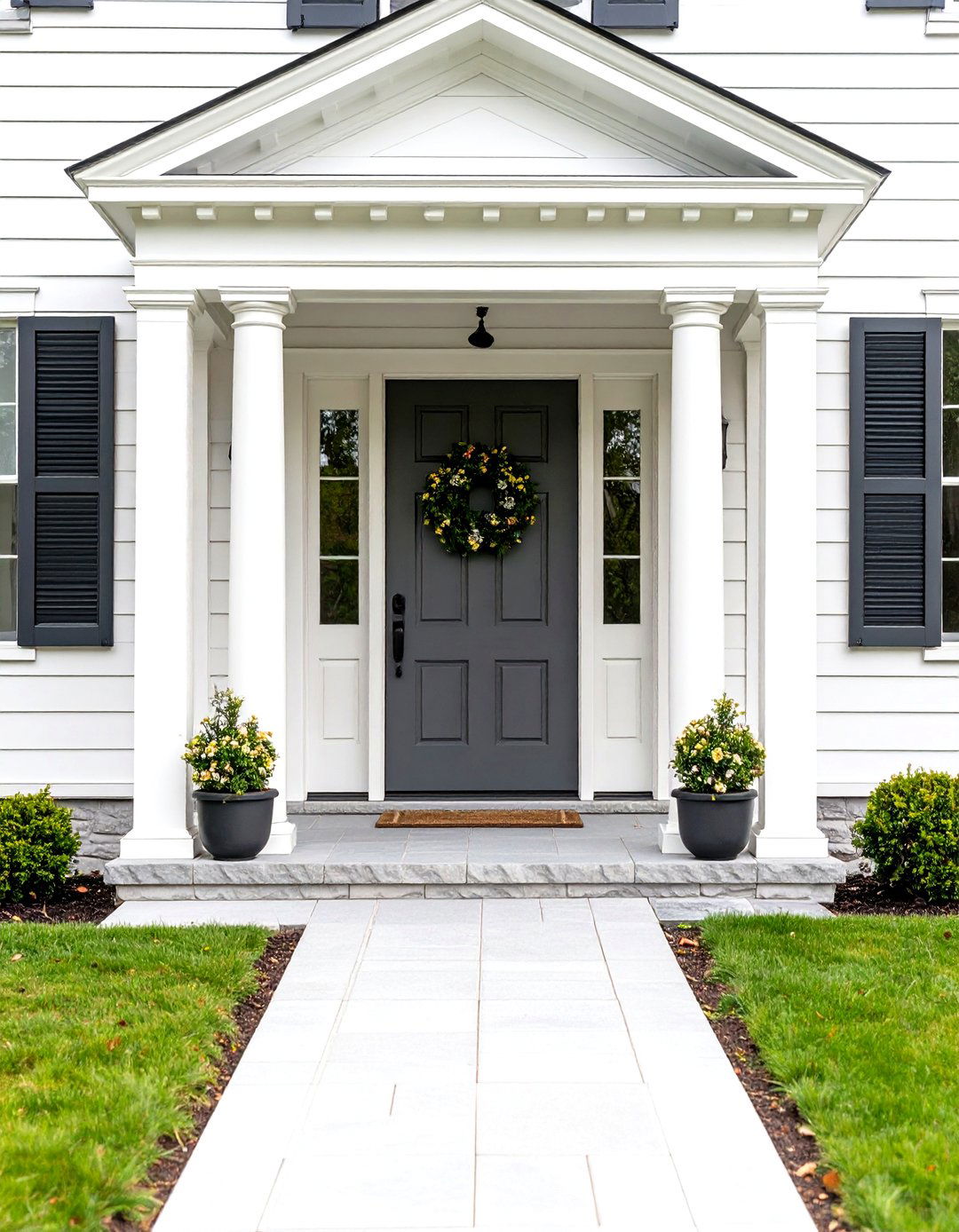
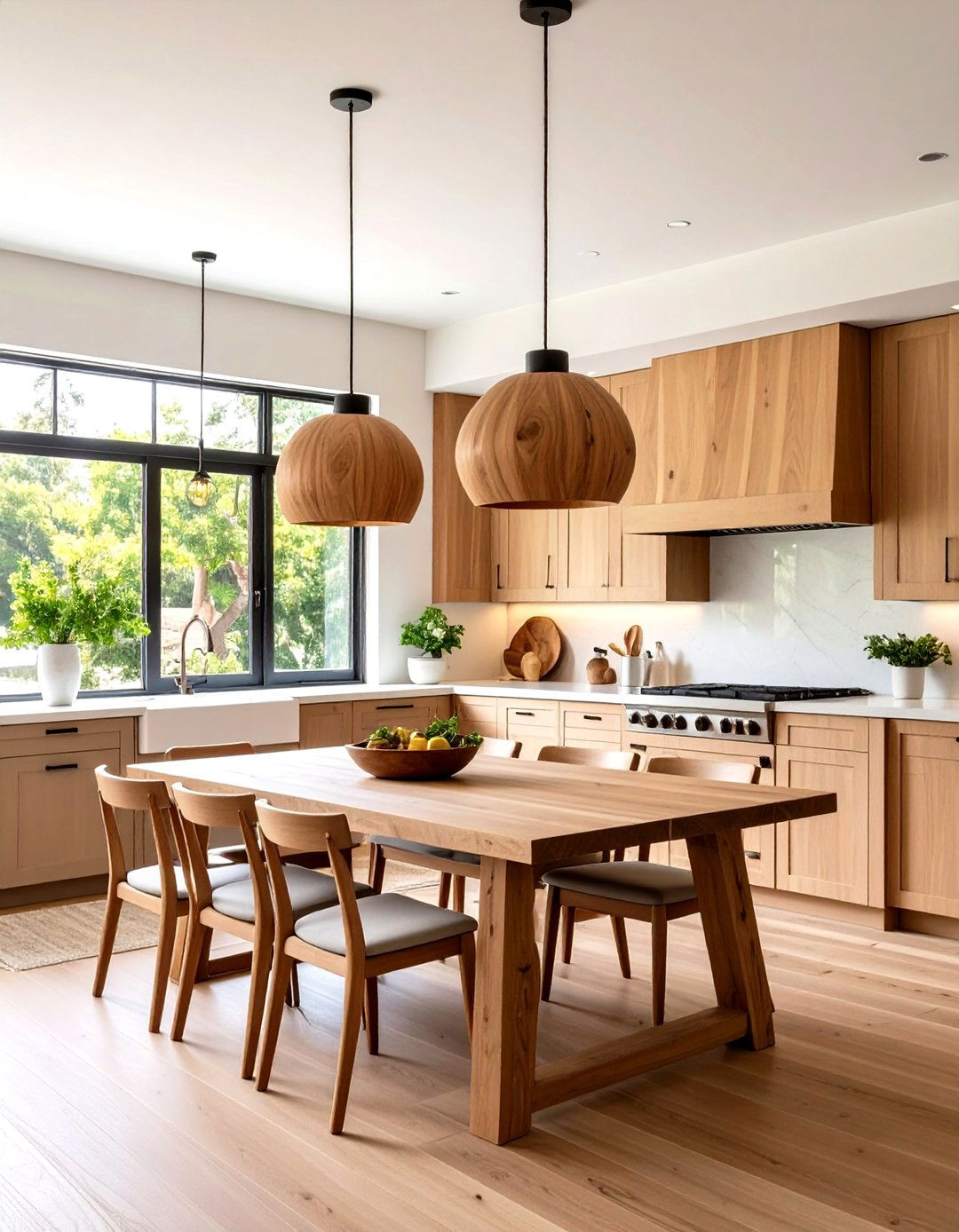
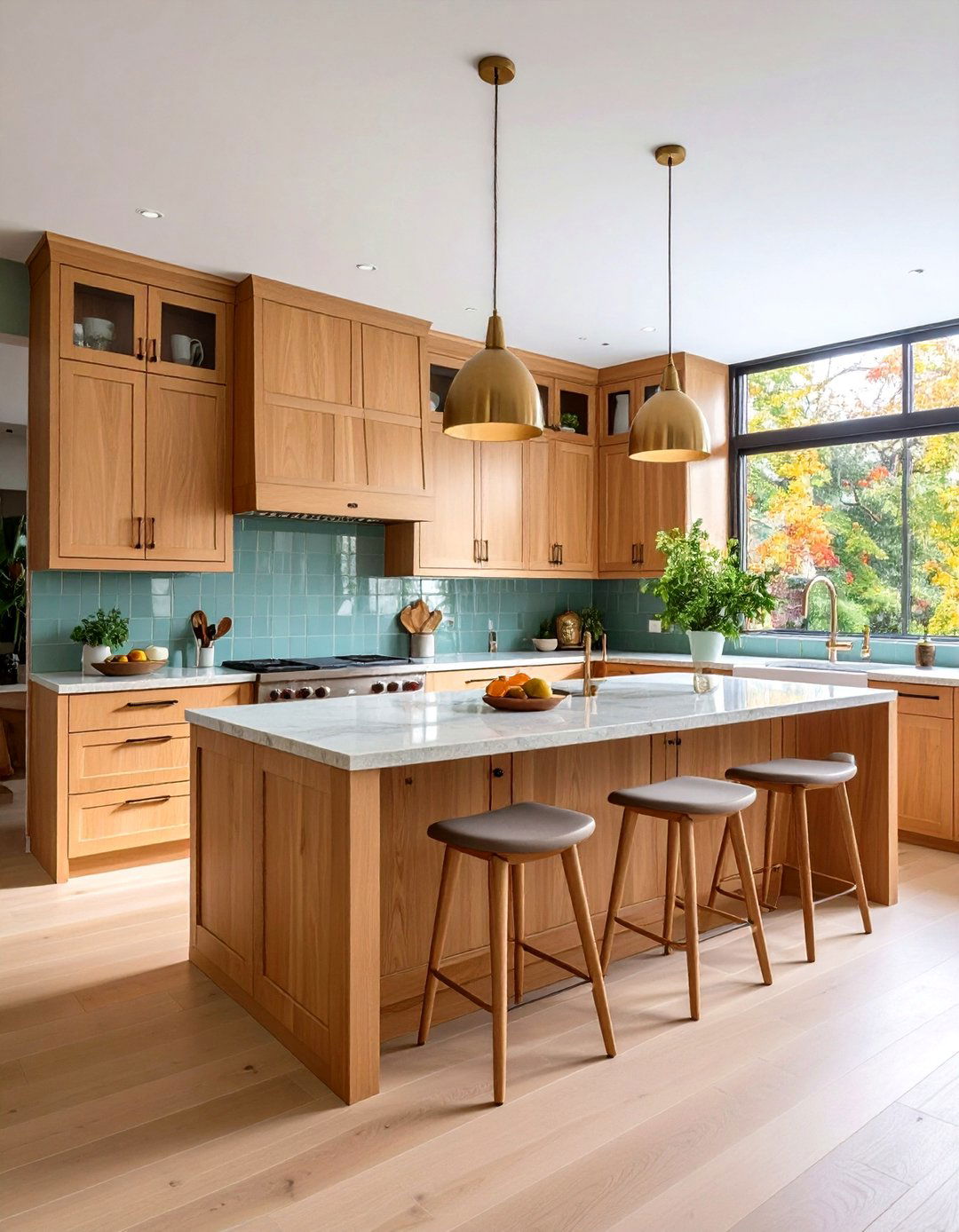
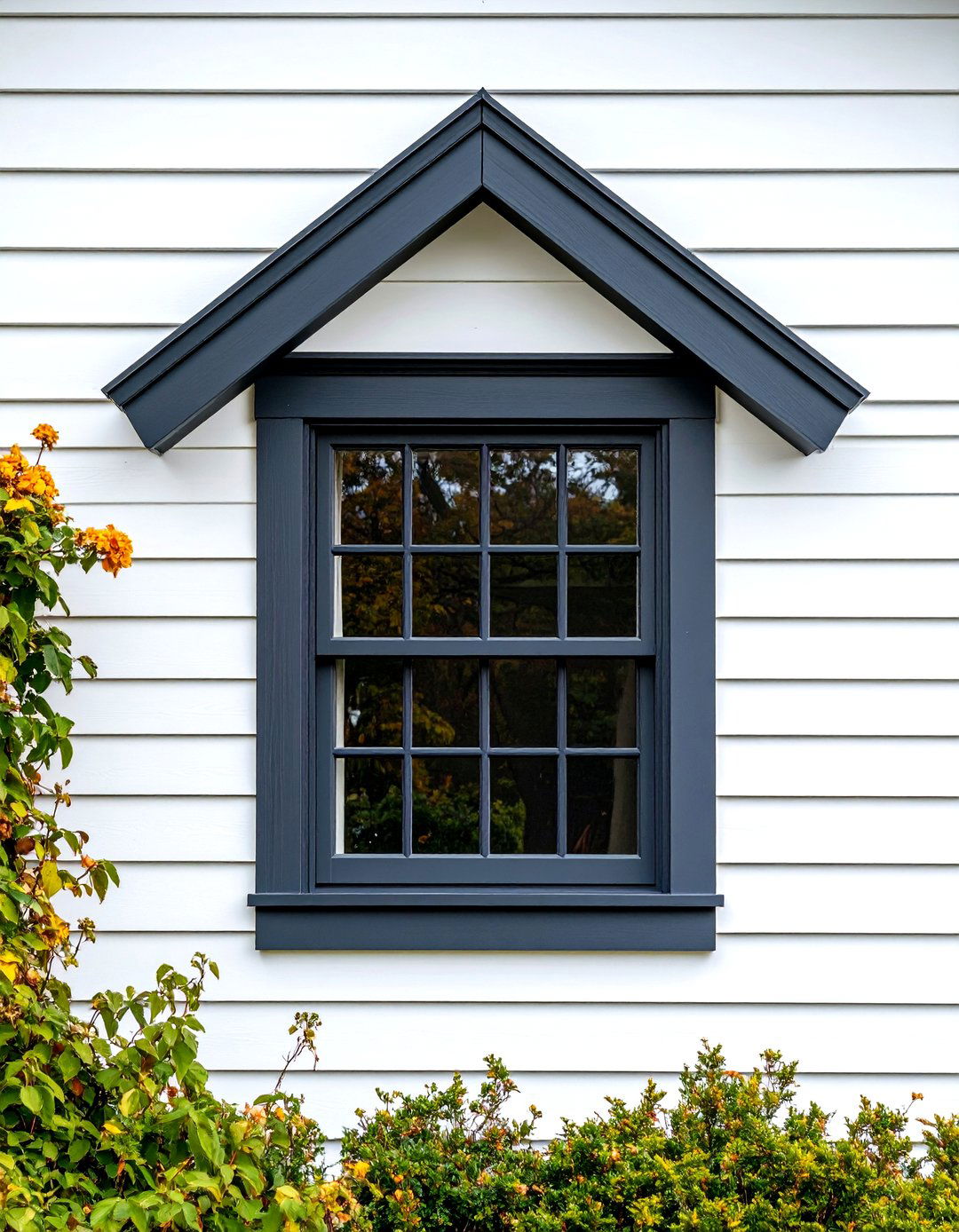
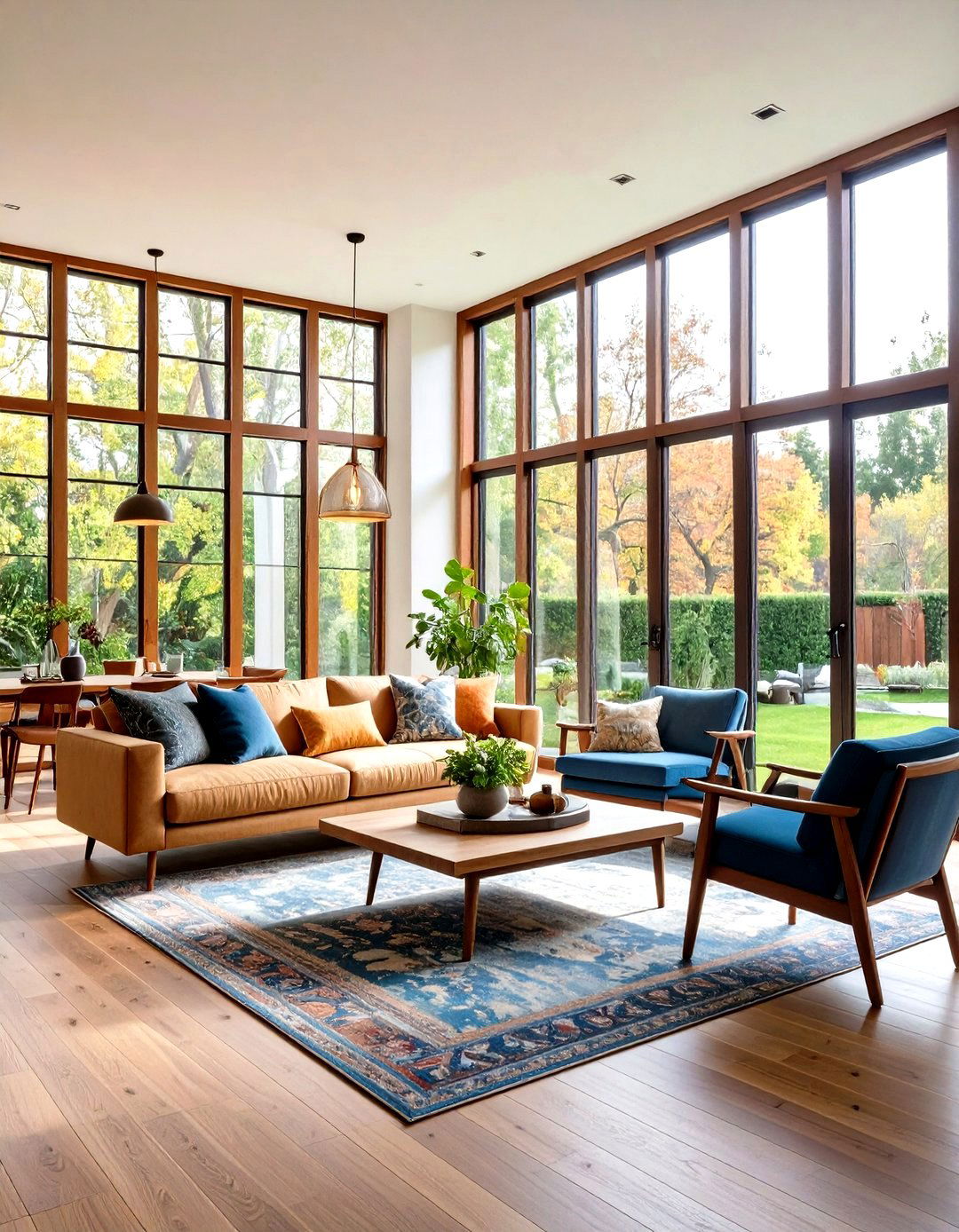
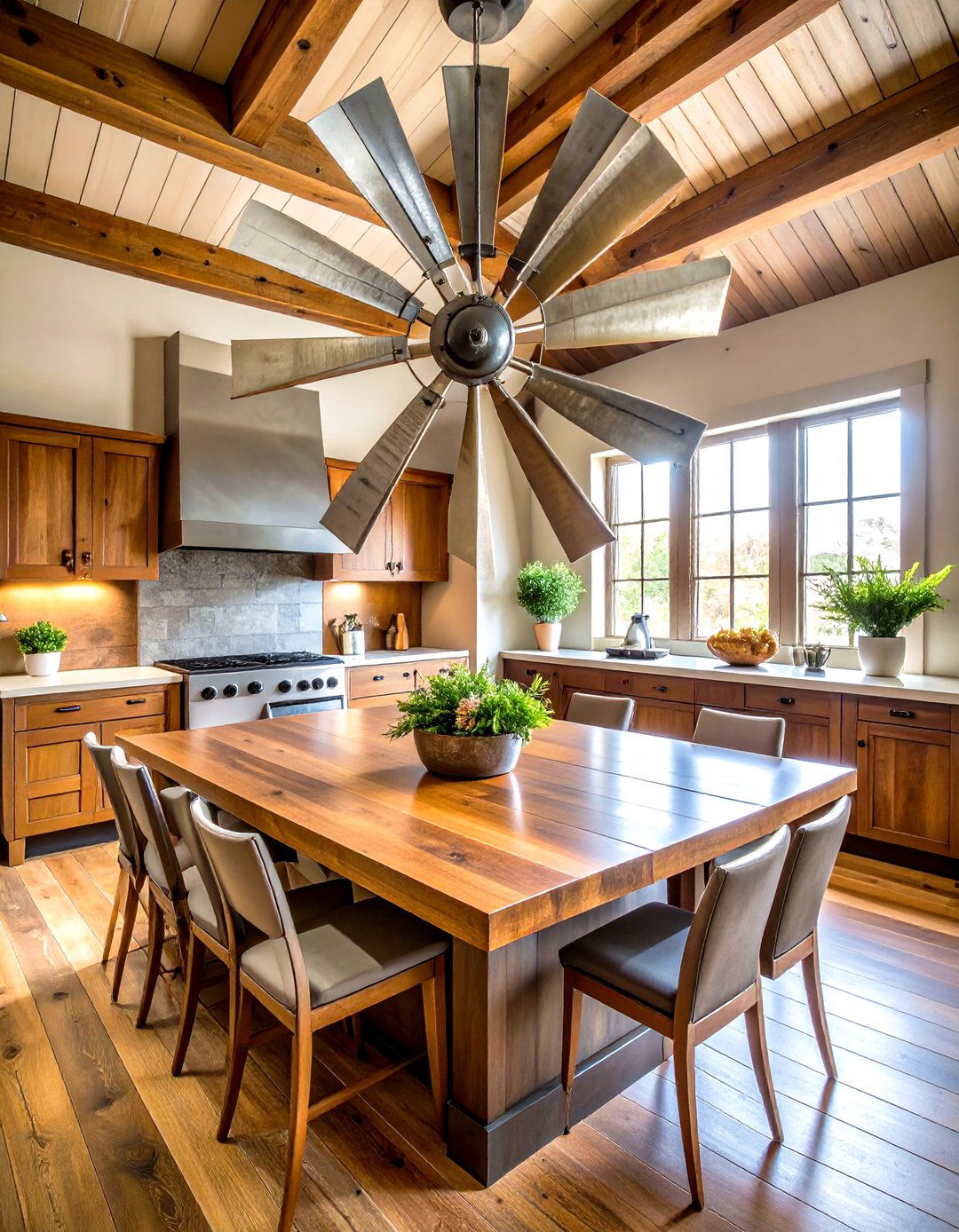
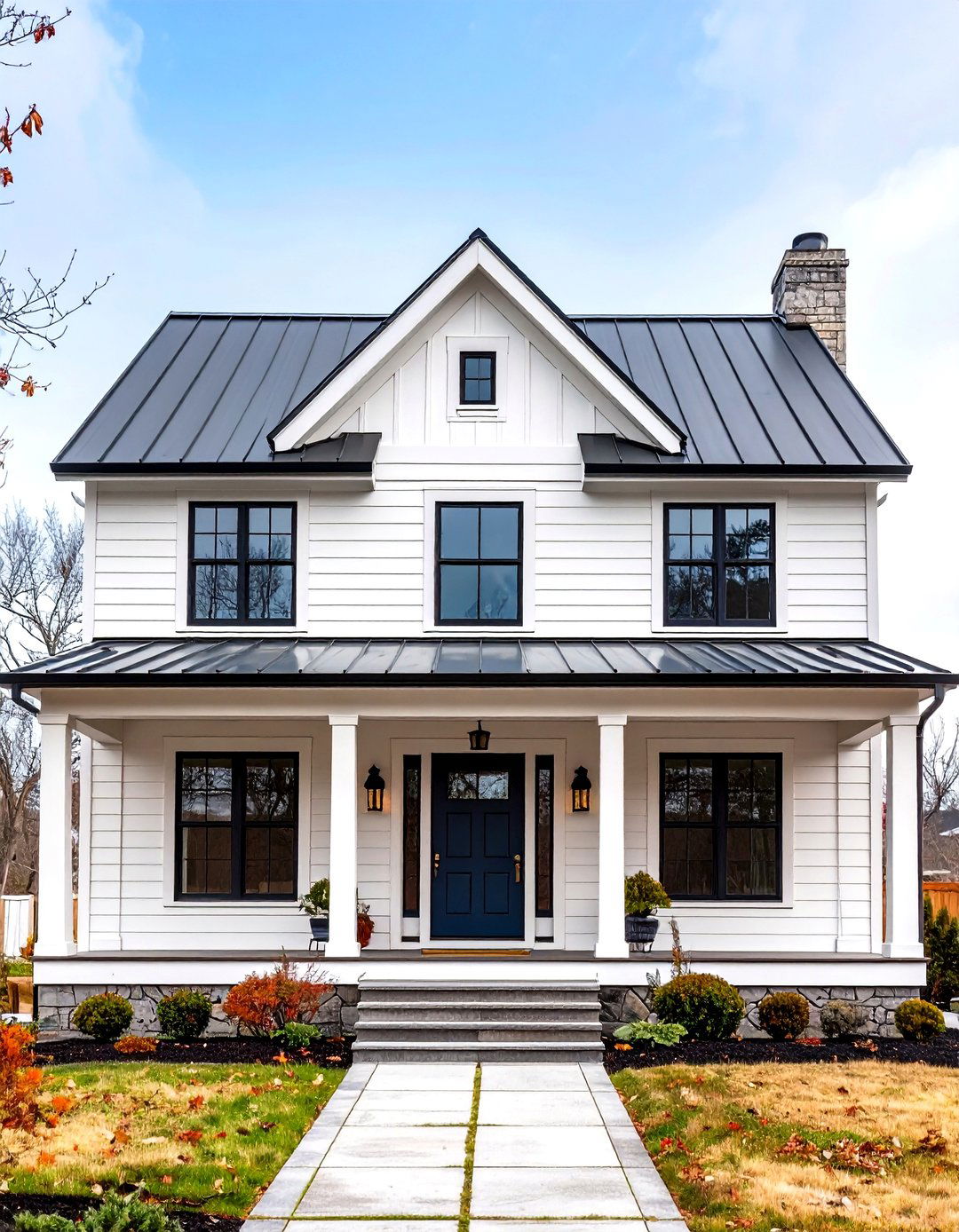
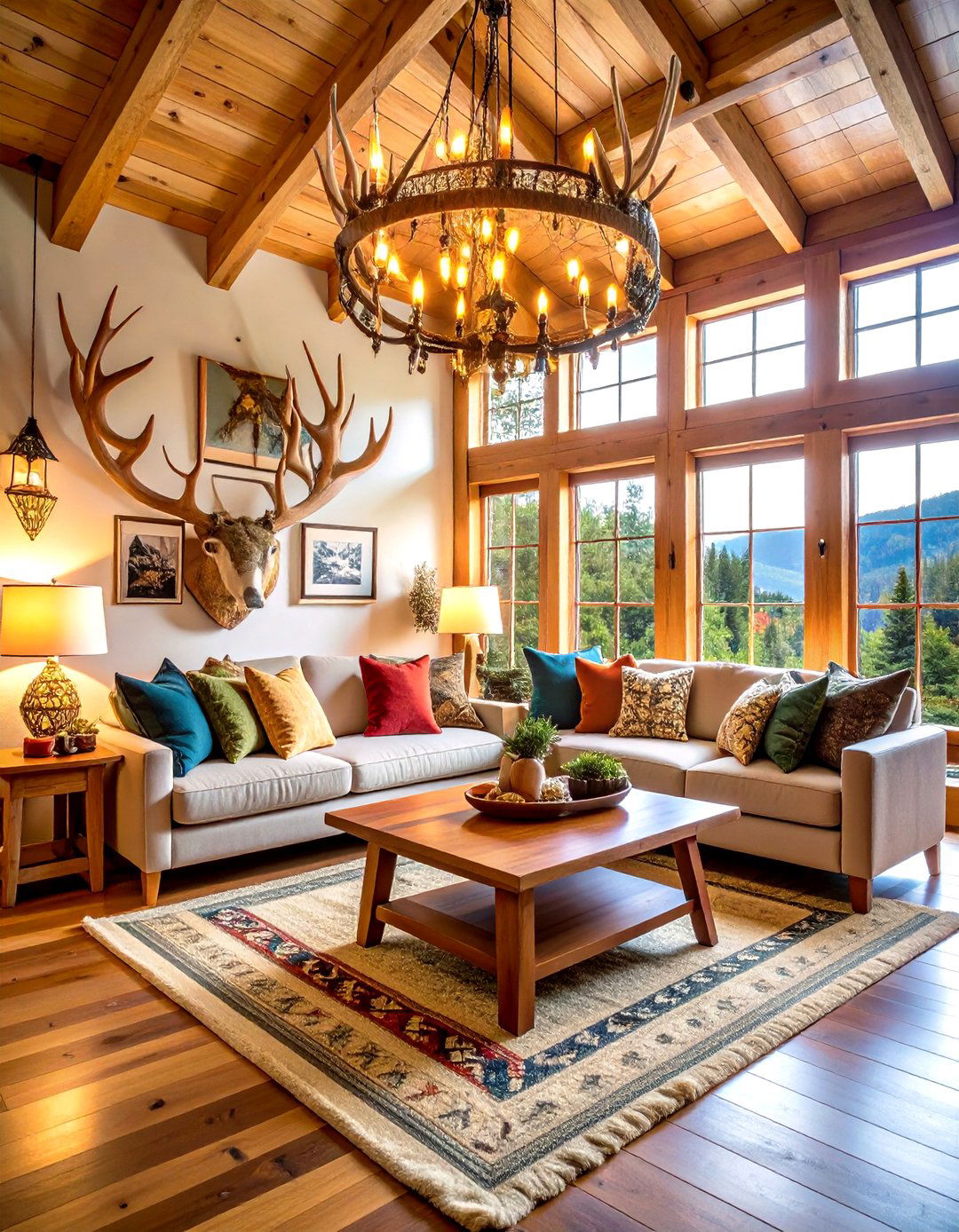

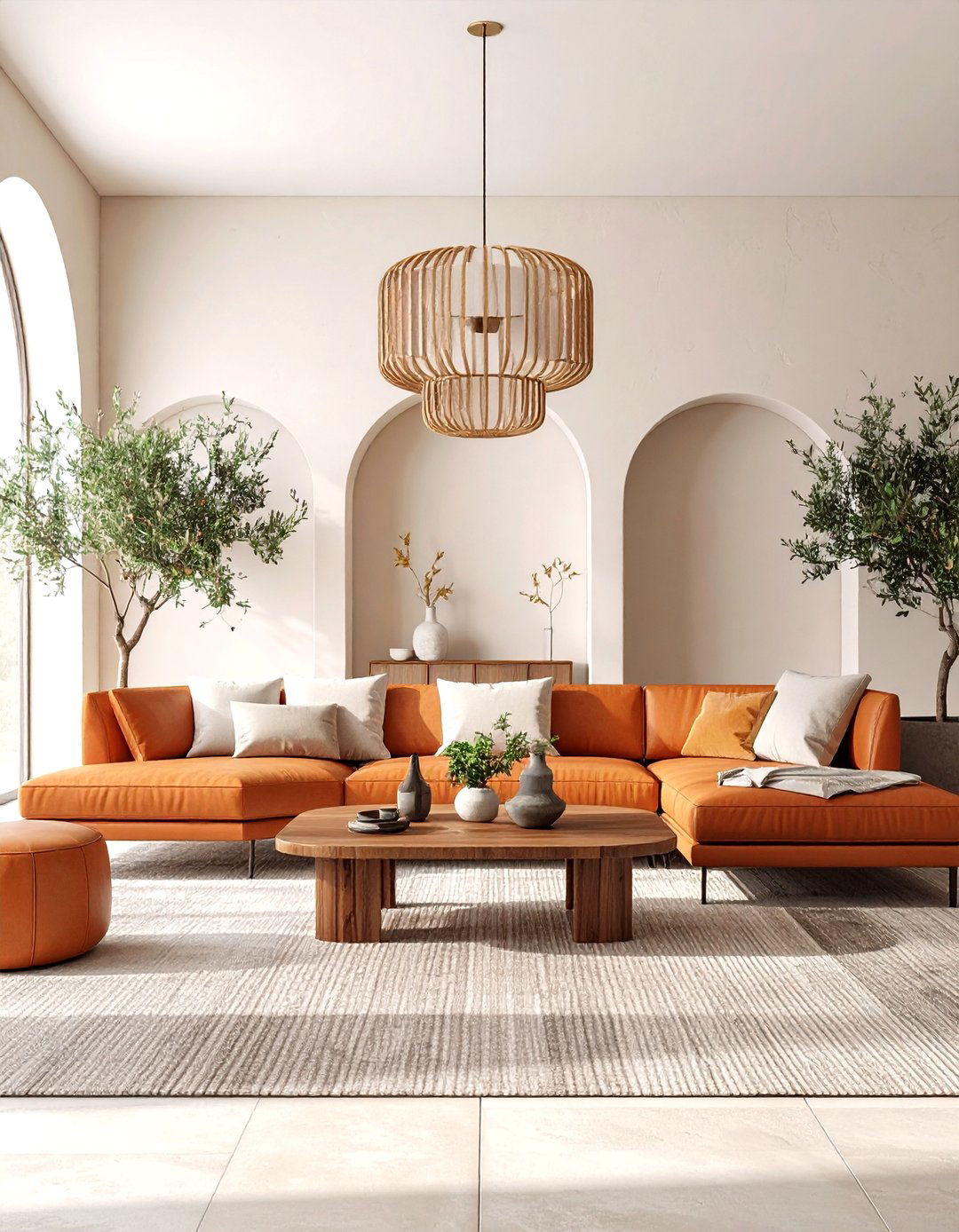
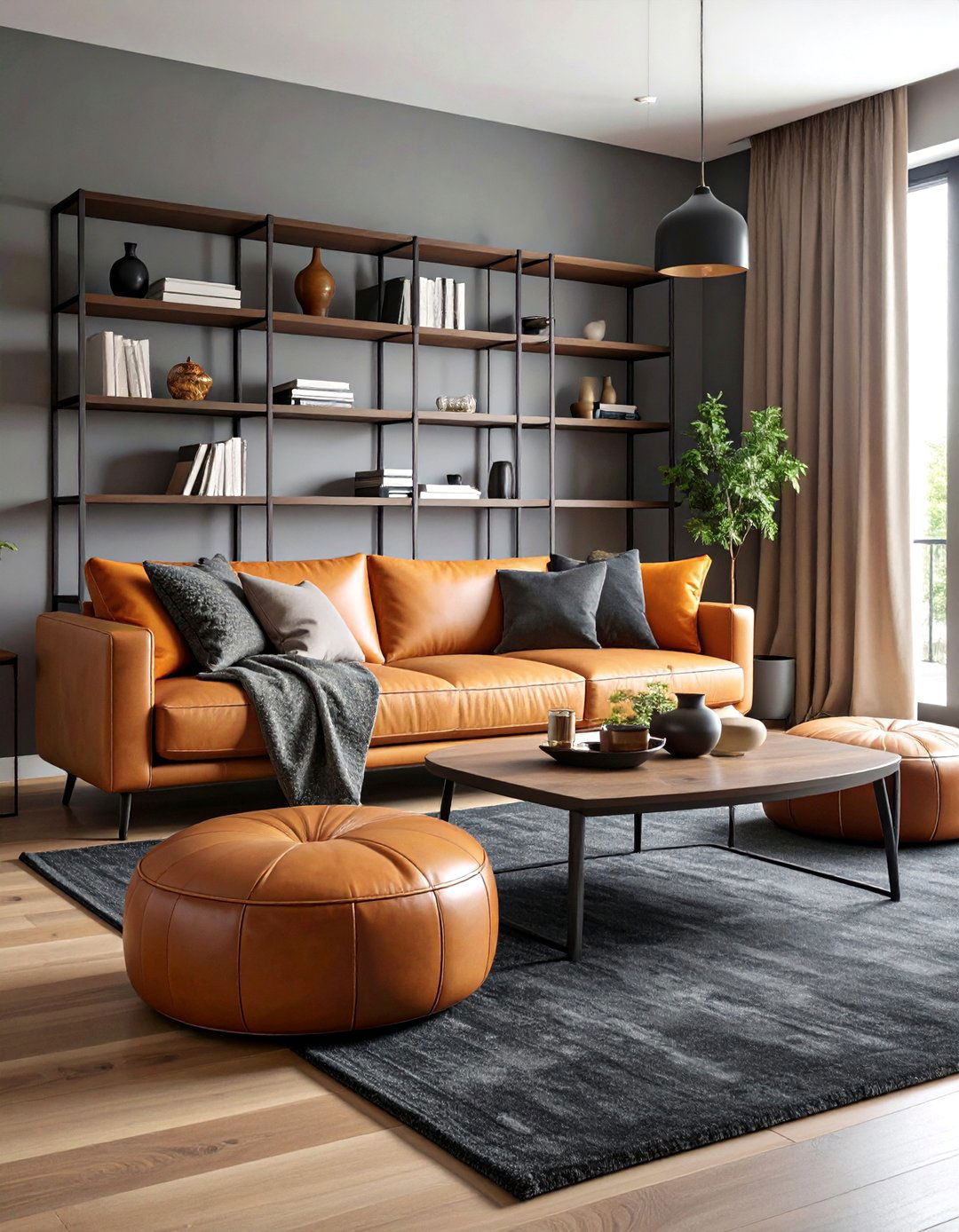
Leave a Reply